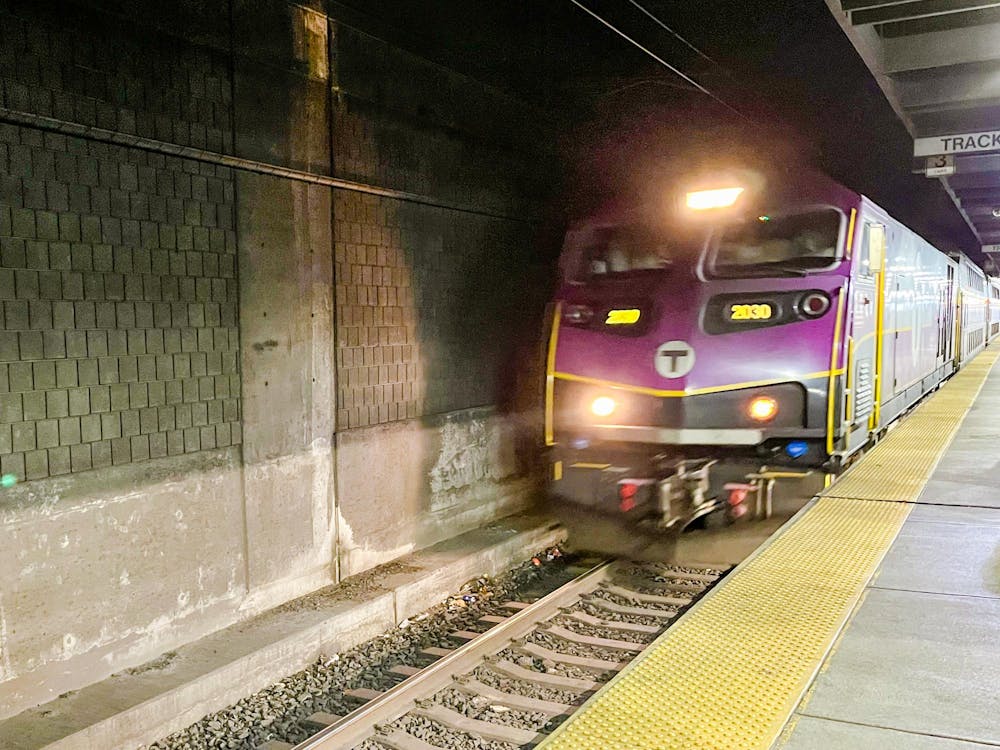On Oct. 3, the Rhode Island Department of Transportation published its Carbon Reduction Strategy and opened the document’s public comment period, which is scheduled to close Friday. The plan, which is required for states to receive funding from the Federal Highway Administration’s Carbon Reduction Program, is due Nov. 15.
The plan aims to “support implementation” of the emission reduction goals outlined in the 2021 Act on Climate, as well as “identify funding priorities,” form “a framework for the future of carbon reduction planning at RIDOT” and assess “the carbon impacts of the transportation sector in Rhode Island,” according to the document.
“The CRS is a practical, data-driven strategy that recognizes both the need to meet demands of commuters and provides tactics to reduce greenhouse gasses,” Charles St. Martin, chief public affairs officer for RIDOT, wrote in an email to The Herald.
Once the plan is submitted, RIDOT is eligible to receive over $35.7 million from the federal government to spend on carbon reduction projects. According to the plan, RIDOT will use two-thirds of those funds to implement the State Transportation Improvement Program. A large portion of those funds will go towards abating “carbon emissions by means of congestion reduction.” That includes $6.3 million for upgrades to signals in “congested corridors” and $4 million for a bridge overpass — out of $15.8 million total for congestion management.
Eligible projects that RIDOT’s estimates show would reduce emissions include the opening of the Cranston Canyon, Route 146 reconstruction and completion of the I-95 Missing Move and Quonset connector ramps.
Two of those projects — the Cranston Canyon and the I-95 ramps — will add new highway lanes.
John Flaherty, deputy director of Grow Smart R.I., said he is skeptical. Because highway expansion projects often induce demand for cars, RIDOT should explore the “elimination of strategies that rely on costly highway capacity expansion projects to reduce congestion,” he said.
Extended highway capacity serves as an “incentive for more people to use (cars), so it goes right back to the same level of congestion that you had before,” he said. "It’s not a long-term strategy.”
Emily Koo ’13, senior policy advocate and Rhode Island program director for the Acadia Center, said the state needs a much more aggressive push toward shifting modes of transportation and the reduction of vehicle miles traveled in order to achieve its Act on Climate targets, which call to reduce emissions 80% from 1990 levels by 2040 and to net-zero by 2050.
“There is a glaring disconnect between the scale of emission reduction needed to move the needle and the investments proposed in RIDOT’s Carbon Reduction Strategy,” Koo wrote in an email to The Herald.
St. Martin agreed that meeting the state’s 2040 and 2050 goals is impossible without a significant expansion of current policies and projects. Inadequate public transportation infrastructure — as well as difficulties in convincing commuters to use that infrastructure — present obstacles in reaching those goals, he said.
“In order to meet the goals set out in the governor’s 2050 emissions reduction plan, you would have to have a major cultural shift and change in the way people move around the state,” he wrote. “We do not see that happening.”
“Our strategy reflects these realities and puts forth workable solutions in the areas where we can actually implement and make a difference in reducing” greenhouse gasses, St. Martin wrote.
In contrast, RIDOT’s plan presents highway projects as an effective way to reduce carbon emissions.
It’s “disappointing that this strategy is not doing more to incentivize mode shift away from cars and toward public transportation and active transportation,” Flaherty said, especially when “we have a vision for that.”
This vision includes the Bicycle Mobility Plan and Transit Master Plan. Both plans project reductions in carbon emissions if implemented.
The Bicycle Mobility Plan, developed in 2020 for the Rhode Island Statewide Planning Program, presents strategies to encourage bicycle use by improving bicycle infrastructure statewide. The carbon reduction strategy calls to allocate $1.5 million to the plan, with more money included for bike lane design.
But “that’s not going to go very far,” said Flaherty.
The Transit Master Plan, also published in 2020 by multiple state transportation agencies, strives to improve mobility for residents by enhancing the state’s public transit network, including rail and bus routes.
Sweeping expansions and improvements proposed in the plan have not come to fruition — instead, RIPTA faces a potential budget cliff as soon as the 2025 fiscal year.
“In the absence of project-level emissions reductions analysis (or public engagement), we must assume that RIDOT’s process for identifying and prioritizing projects and strategies is based solely on ‘RIDOT’s internal priorities and logistical capacities’ — in other words, the way things have always been done,” Koo wrote.
RIDOT held a stakeholder workshop in Sept. 2023 to identify strategies and priorities while crafting the strategy. Grow Smart R.I. and the Acadia Center each had one representative at the workshop.
According to Flaherty, it was “a very uplifting two-and-a-half-hour workshop … the process resulted in a lot of really exciting proposals and suggestions.” While these projects are listed in the CRS, they have not been allocated any of the $35.7 million, he said.
According to St. Martin, beyond the CRS, “RIDOT is spending nearly $1.5 billion over 10 years outside that program in funding areas for rail, bicycle, pedestrian, transit, safety, electric-vehicle infrastructure and ferry projects.”
The month-long public comment period is a chance for state residents to comment on the CRS. Flaherty hopes residents will use the public comment period to “demand more of our state DOT, to adopt a more forward-looking vision that truly reduces emissions.”
After the comment period, RIDOT will have just under two weeks to revise its plan before the due date.
“I just hope that they make some effort to change it,” Flaherty said. But with the quick turnaround time, he’s “not that hopeful.”

Maya Kelly is a senior staff writer from Providence who covers business and development. A concentrator in urban studies and data fluency, she is passionate about intersecting storytelling with data analysis. When Maya's not at The Herald, you can find her hanging from an aerial silk, bullet journaling or in the middle of a forest.





